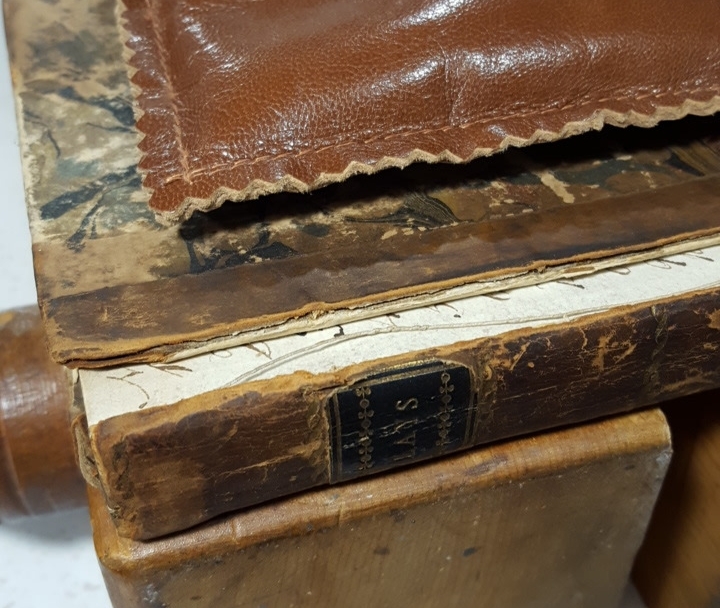Brown's Vermifuge Comfits advertising poster board, c. 1860's. Recto showing chromolithograph print.
Brown's Vermifuge Comfits advertising poster board, c. 1860's. Verso showing acidic pulp board backer.
This interesting 1860's advertising poster for Brown's Vermifuge Comfits came to the studio with a jagged break across the centre of the board. Its conservation treatment involved repairing the break, inpainting loss and light surface cleaning.
Chromolithograph advertising artworks such as this one, for a patent medicine based on worms, (sounds appetizing, doesn't it?), were frequently produced mounted on a thin pulp board backer, for strength and display purposes. The acidic wood-pulp board has however, after 150 years, become brittle and crumbly, and in its weakened state is easily damaged.
Inserting a repair strip across the break.
The break was mended by inserting a thin but strong strip of acid-free board into the centre of each side, providing a sort of "biscuit" joint repair. The sides were prepared first by splitting the board, and removing some of the original board material to make room for the repair strip. Then the repair was cut to match the shape of the break, and thinned down on either side to allow for easier insertion. The joint was completed and adhered with our good friend wheat starch paste, and pressed under weight to dry.
The loss filled with Japanese paper and ready for inpainting.
Damage around the break had resulted in some loss to the surface of the printed image. The loss was filled with Japanese paper fibres and then inpainted to match the surrounding image.
Swabbing to remove dark brown accretions on the surface.
Finally, swabbing removed several sticky brown accretions on the surface of the advertisement.
After treatment, the break is repaired.
After restoration the advertisement board is intact, with little evidence of it's previous damage. It is ready once again to give us a glimpse into the strange victorian era of quack medicine.













